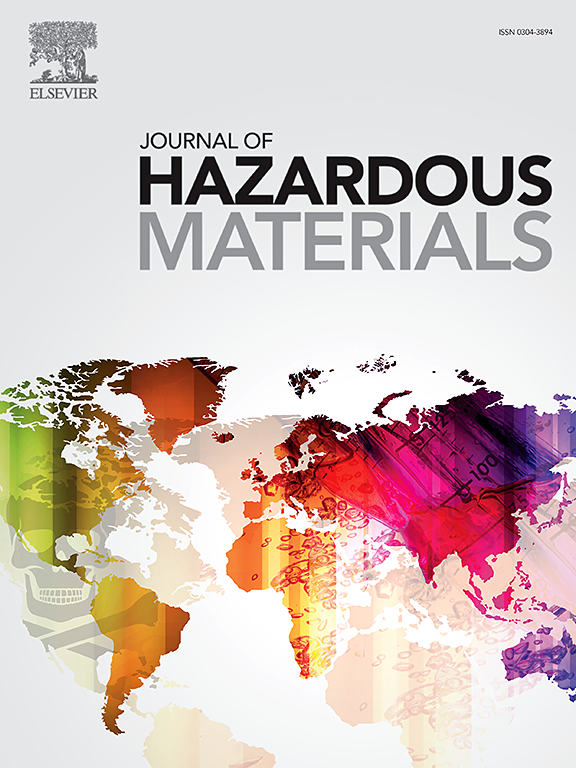Impacts of different plastic residues on soil volatile profiles associated with microbiome dynamics
IF 12.2
1区 环境科学与生态学
Q1 ENGINEERING, ENVIRONMENTAL
引用次数: 0
Abstract
Plastic pollution poses a significant threat to soil ecosystems, yet the role of volatile organic compounds (VOCs) in plastic degradation is not well-studied. The present research focuses on the impact of polyethylene (PE), polylactic acid (PLA), and poly(butylene-adipate-co-terephthalate) (PBAT) residues on soil in a 12-week long lab-scale aerobic experiment. The study focused on the dynamics of VOC profiles, soil physicochemical properties, and microbial communities. PBAT, known for its biodegradability, produced a distinct VOC profile with hazardous compounds such as 1,3-butadiene, which is consistently associated with cardiovascular diseases and leukemia. Microbial analysis of PBAT revealed distinct bacterial and fungal diversity responses, along with unique KEGG pathway profiles compared to PE and PLA, suggesting its biodegradation process may involve biofilm formation and quorum sensing. Correlation analysis based on the relevant abundance of specific microbes exhibited strong positive correlations, such as Streptomyces with propyne emission and Hydrogenispora with ethylene emission. These results demonstrated distinct biodegradation patterns of various plastics in soil, identified through the combination of VOC detection and microbiome analysis.

塑料污染对土壤生态系统构成了重大威胁,但挥发性有机化合物(VOC)在塑料降解中的作用却没有得到充分研究。本研究通过为期 12 周的实验室规模好氧实验,重点研究了聚乙烯(PE)、聚乳酸(PLA)和聚对苯二甲酸丁二醇酯(PBAT)残留物对土壤的影响。研究的重点是挥发性有机化合物概况、土壤理化性质和微生物群落的动态变化。以生物降解性著称的 PBAT 产生了独特的挥发性有机化合物特征,其中包括有害化合物,如 1,3-丁二烯,它一直与心血管疾病和白血病有关。与聚乙烯和聚乳酸相比,PBAT 的微生物分析显示了不同的细菌和真菌多样性反应,以及独特的 KEGG 通路特征,表明其生物降解过程可能涉及生物膜的形成和法定量感应。根据特定微生物的相关丰度进行的相关性分析显示出很强的正相关性,如链霉菌与丙炔排放、氢孢属与乙烯排放。这些结果表明,通过结合挥发性有机化合物检测和微生物组分析,土壤中各种塑料的生物降解模式截然不同。
本文章由计算机程序翻译,如有差异,请以英文原文为准。
求助全文
约1分钟内获得全文
求助全文
来源期刊

Journal of Hazardous Materials
工程技术-工程:环境
CiteScore
25.40
自引率
5.90%
发文量
3059
审稿时长
58 days
期刊介绍:
The Journal of Hazardous Materials serves as a global platform for promoting cutting-edge research in the field of Environmental Science and Engineering. Our publication features a wide range of articles, including full-length research papers, review articles, and perspectives, with the aim of enhancing our understanding of the dangers and risks associated with various materials concerning public health and the environment. It is important to note that the term "environmental contaminants" refers specifically to substances that pose hazardous effects through contamination, while excluding those that do not have such impacts on the environment or human health. Moreover, we emphasize the distinction between wastes and hazardous materials in order to provide further clarity on the scope of the journal. We have a keen interest in exploring specific compounds and microbial agents that have adverse effects on the environment.
 求助内容:
求助内容: 应助结果提醒方式:
应助结果提醒方式:


